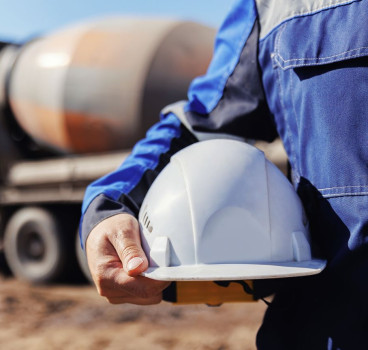Cold weather concreting - how to avoid common mistakes
January saw the lowest temperatures in the UK since February 2016, and with the potential for more cold snaps on the way, it's a good time to review the procedures for placing concrete in cold weather.
If young concrete is allowed to cool to below freezing temperature, it is very likely that it will be damaged to the point of being entirely unfit for use. Should freshly-placed concrete be allowed to reach temperatures lower than 0°C, the water in the mix will freeze and expand; maintaining a temperature above zero degrees will help to ensure the intended strength of your concrete is reached- even if it is at a slower rate than was anticipated.
However, if the concrete is able to reach a strength of approximately 2N/mm2 it is likely to be able to resist the expansion and damage
It is important to note that even if temperatures don't reach freezing point, low temperatures will cause the concrete's strength to develop significantly slower than in warmer ambient temperatures.
This strength is typically reached within 48 hours for most mixes, should the concrete be kept above 5°C. So how, during cold weather, should you keep concrete sufficiently warm for the first 48 hours to ensure that this strength is able to develop?
Concrete should never be poured onto frozen ground, snow or ice. You can use heaters to thaw the ground prior to pouring concrete. If you plan to use heated enclosures, make certain they are both windproof and weatherproof.
Your concrete should include a maximum water to cement ratio, to limit bleeding. Additionally, you should not begin your final finishing operations whenever bleed water is still present.
It is important that formwork is not removed early, or else there is a risk that concrete in suspended slabs or beams could be too weak to carry its own weight due to the slower rate of strengthening the slow rate of strength development needs to be taken into account when calculating times for formwork removal.
Strength gain can be increased by minimising the amount of cement replacements or using admixtures- always seek the advice of your suppliers
If temperatures are low enough that frost is expected, useful protection measures include insulated or heated frost blankets and insulated formwork. Timber formwork often offers sufficient insulation by itself. Steel formwork is a poor insulator, and exposed surfaces should be covered with insulating material or temporary covers heated with space heaters.
For severe frost, it is best to heat the concrete (10°C) for delivery. If heated concrete is not available, it is better to delay your concreting until the ambient temperature rises to above 2°C.
When planning your concreting, you can obtain information on the likely temperatures from the Met Office, and should use this to plan your approach so you are never caught short or forced to delay your work. Armed with this information, you will be able to place your concrete perfectly, first time, whatever the weather.
By Andrew Bourne, Senior Area Sales Manager - Concrete at Sika
Visit: visit www.sika.co.uk
Additional Blogs

The silent death of the fixed-price contract
For decades, the fixed-price contract has been the backbone of construction procurement. It promised certainty with a defined scope, an agreed sum and a clear transfer of risk from client to...
Read moreWhy good contractors are walking away from bad projects
There is a growing change happening across the construction industry, one that many clients still have not fully recognised. Highly competent, reputable contractors are increasingly walking away from...
Read more

When fire breaks out who really knows the system
The story that caught my attention recently wasn’t about fire growth or building loss, it was about confusion. Specifically, the confusion faced by the fire service when arriving at buildings...
Read more